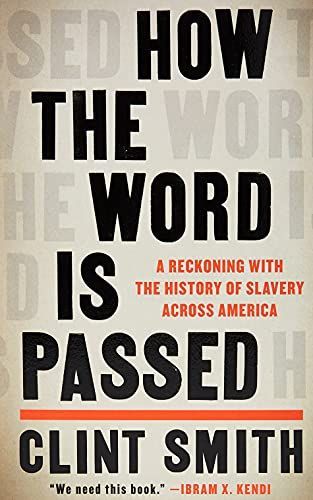
How the Word Is Passed A Reckoning with the History of Slavery Across America
Beginning in his hometown of New Orleans, Clint Smith leads the reader on an unforgettable tour of monuments and landmarks - those that are honest about the past and those that are not - that offer an intergenerational story of how slavery has been central in shaping America's collective history. It is the story of the Monticello Plantation in Virginia, the estate where Thomas Jefferson wrote letters espousing the urgent need for liberty while enslaving more than four hundred people. It is the story of the Whitney Plantation, one of the only former plantations devoted to preserving the experience of the enslaved people whose lives and work sustained it. It is the story of Angola, a former plantation-turned-maximum-security prison in Louisiana that is filled with Black men who work across the 18,000-acre land for virtually no pay. And it is the story of Blandford Cemetery, the final resting place of tens of thousands of Confederate soldiers. A deeply researched and transporting exploration of the legacy of slavery and its imprint on centuries of American history, How the Word Is Passed illustrates how some of America's most essential stories are hidden in plain view - whether in places we might drive by on our way to work, holidays such as Juneteenth or entire neighbourhoods like downtown Manhattan, where the brutal history of the trade in enslaved men, women and children has been deeply imprinted. Informed by scholarship and brought to life by the story of people living today, Smith's debut work of non-fiction is a landmark of reflection and insight that offers a new understanding of the hopeful role that memory and history can play in making sense of the United States and how it has come to be.
Reviews
Megan Parrott@meganparrott
Isabella @iscbella
Patty Pforte@pfortep1
Ethan Hill@localhero
Zoe McKenna@zoe_v_mck
Sahi K@sahibooknerd
Jennifer Long@badassjen
Kevin S Perrine@kevinsperrine
Annabelle Kortum@akortum
Francine Corry@booknblues
Kristen Savage@savage_one
Steph@stephelaine
Riley@tryingtoread
Paula Plaza Ponte @paulapp
daniela@ooorangemoon
Sarah engelhardt @see111
Lizelle G@lizelle
Abhimat Gautam@abhimat
Eitan Hershkovitz@ehershkovitz
Joyce Gu@gujoyce1999
Harish Kilaru@harish
Jonathan Grunert@jgrunert
Tiffany@scientiffic
Jack Hartgrave@cyberbullydad
Highlights
kris aziabor@kris
Mari-Claire Parrin@mariclaire
Page 134
Mari-Claire Parrin@mariclaire
Page 101
Mari-Claire Parrin@mariclaire
Page 26
Mari-Claire Parrin@mariclaire
Page 11